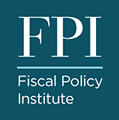What to Expect in the Budget: Healthcare
Healthcare didn’t take center stage in Governor Hochul’s State of the State address this week, but that doesn’t mean it won’t be central to New York politics this session. After all, rising healthcare costs are a key component of the affordability crisis squeezing New Yorkers, with premiums for individual and small-group health insurance set to increase by 12.7 percent this year.

